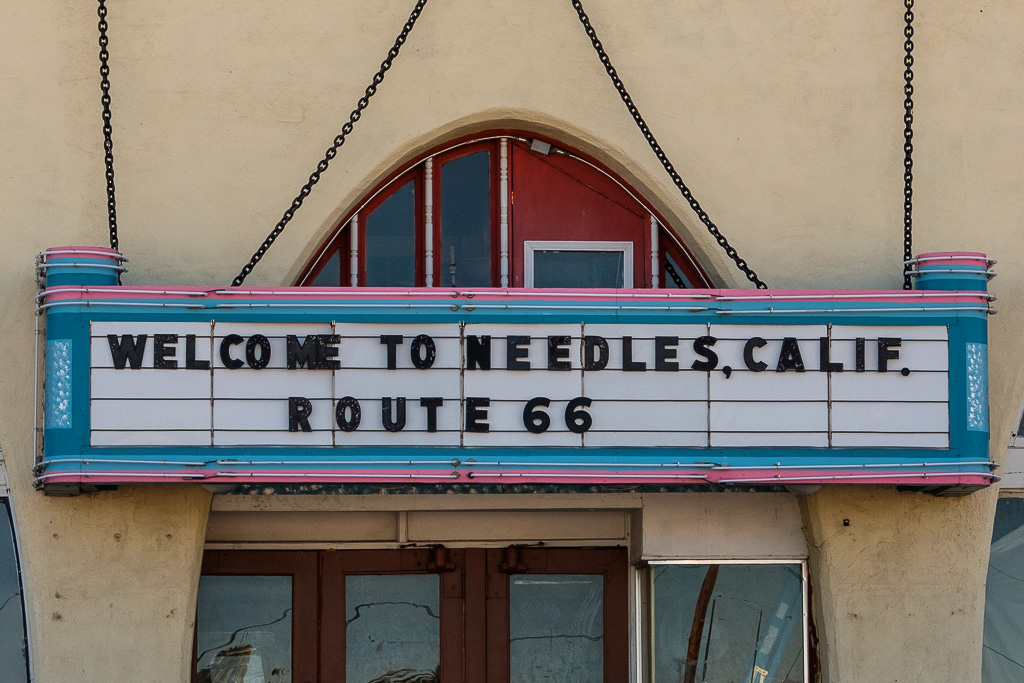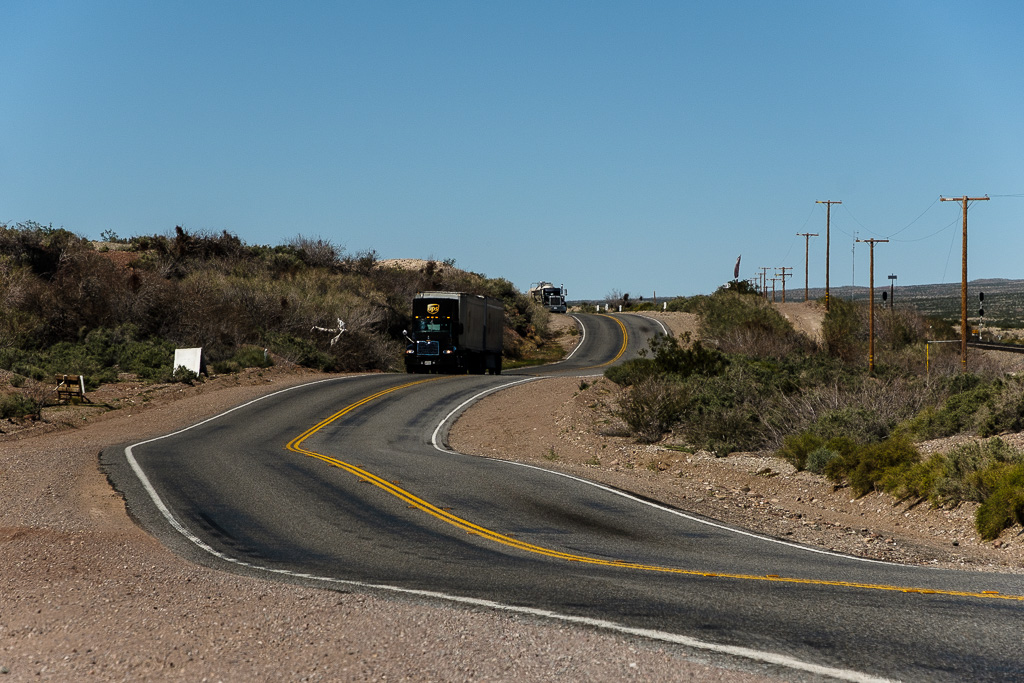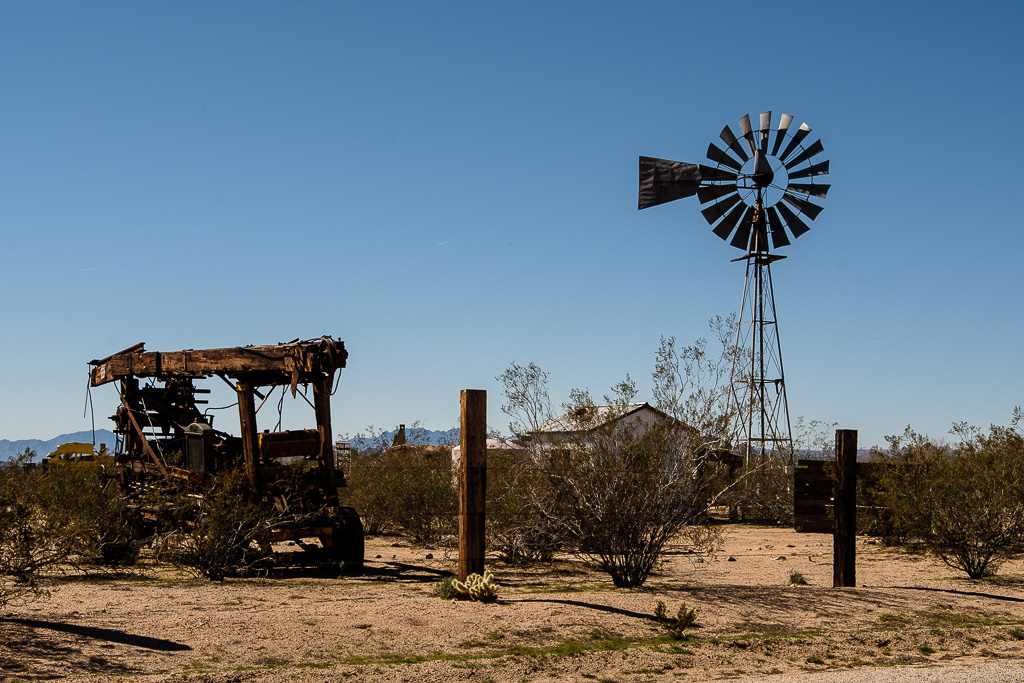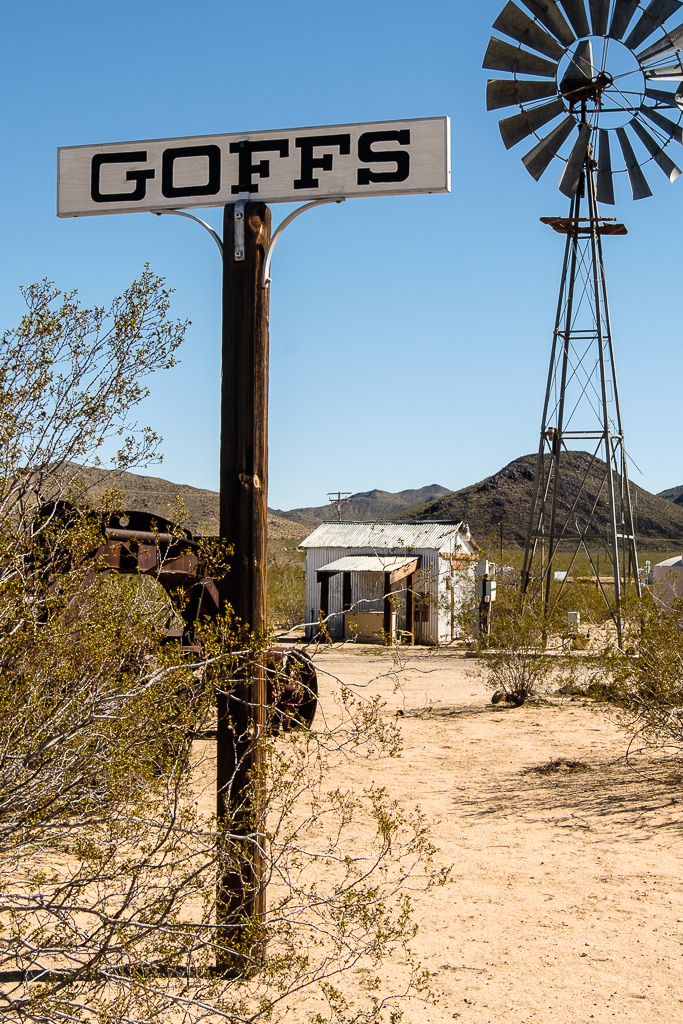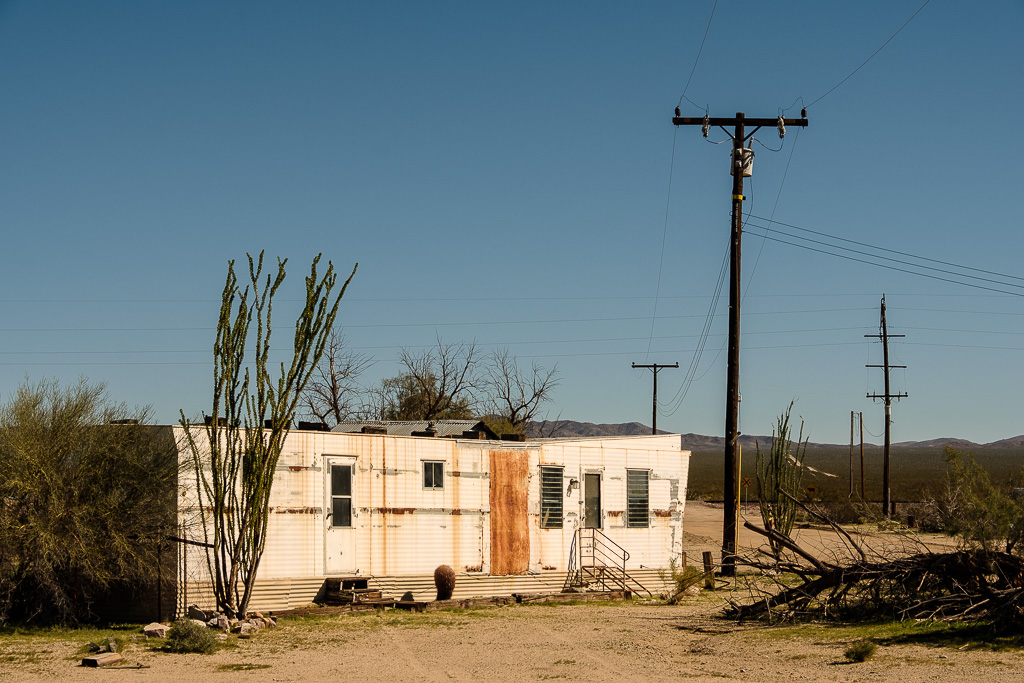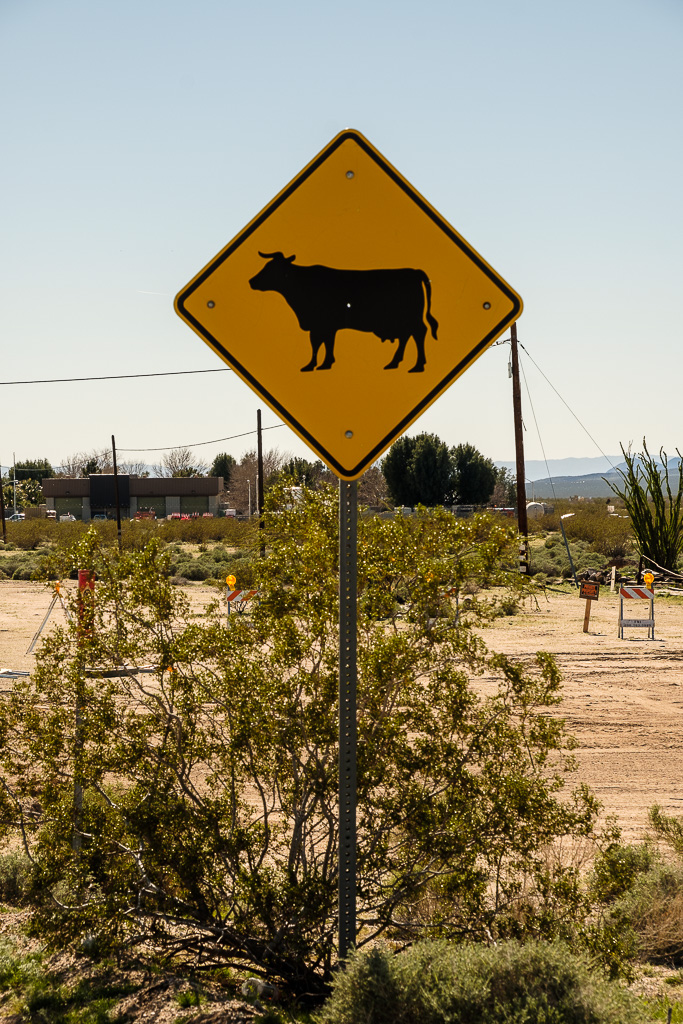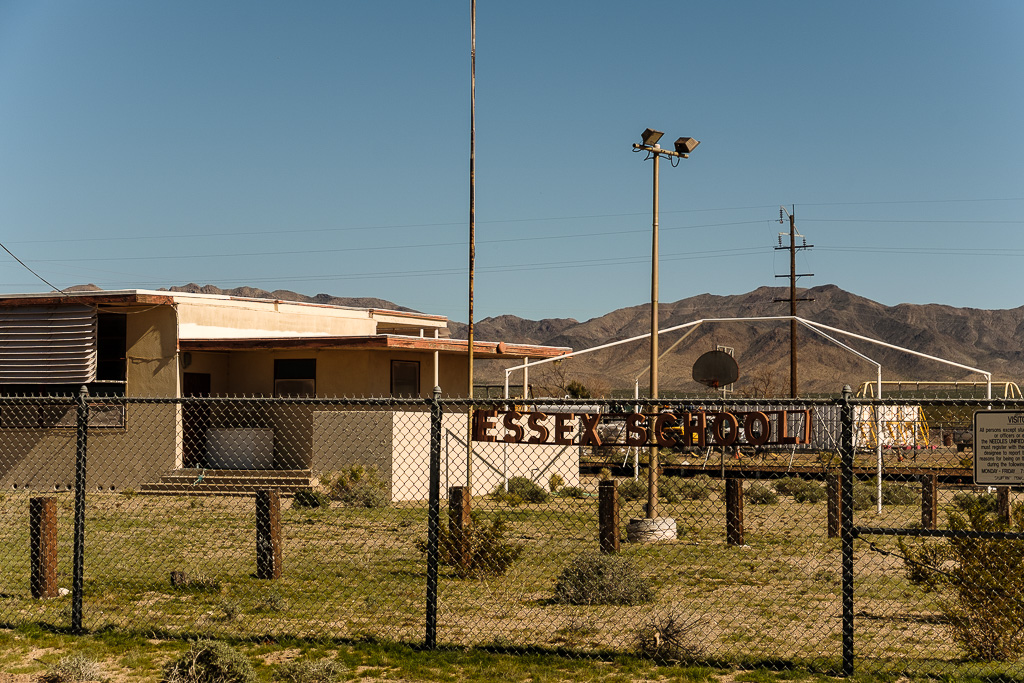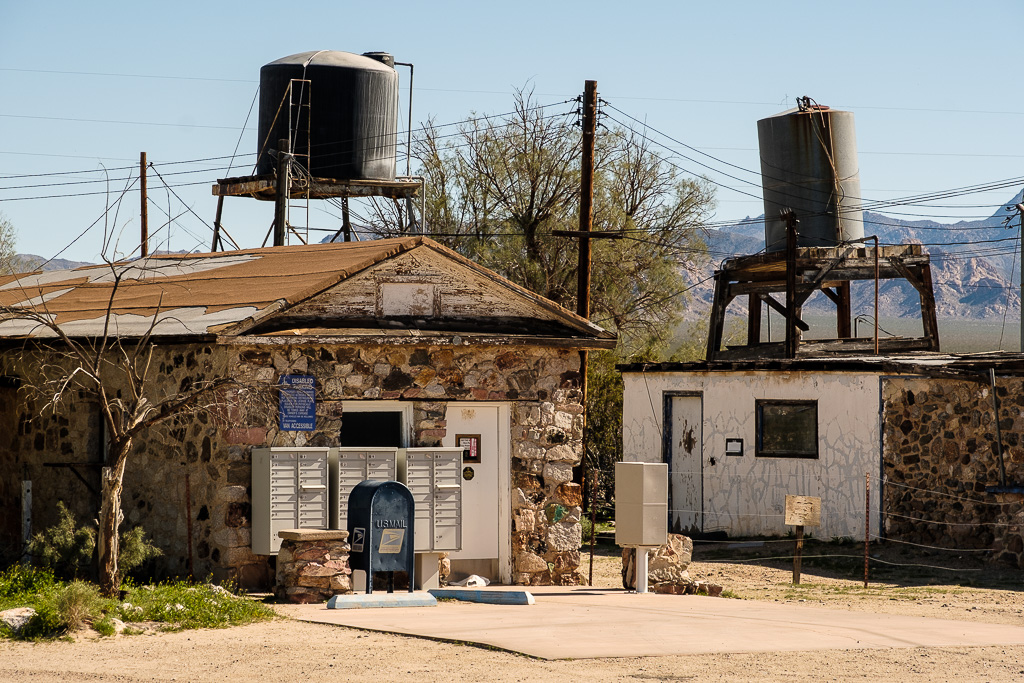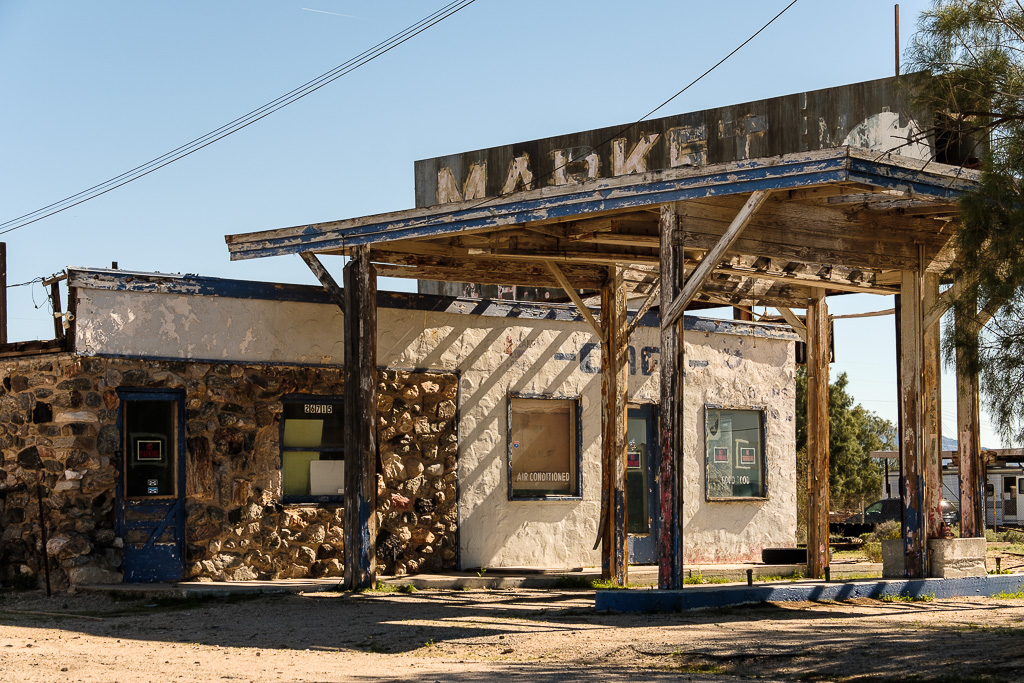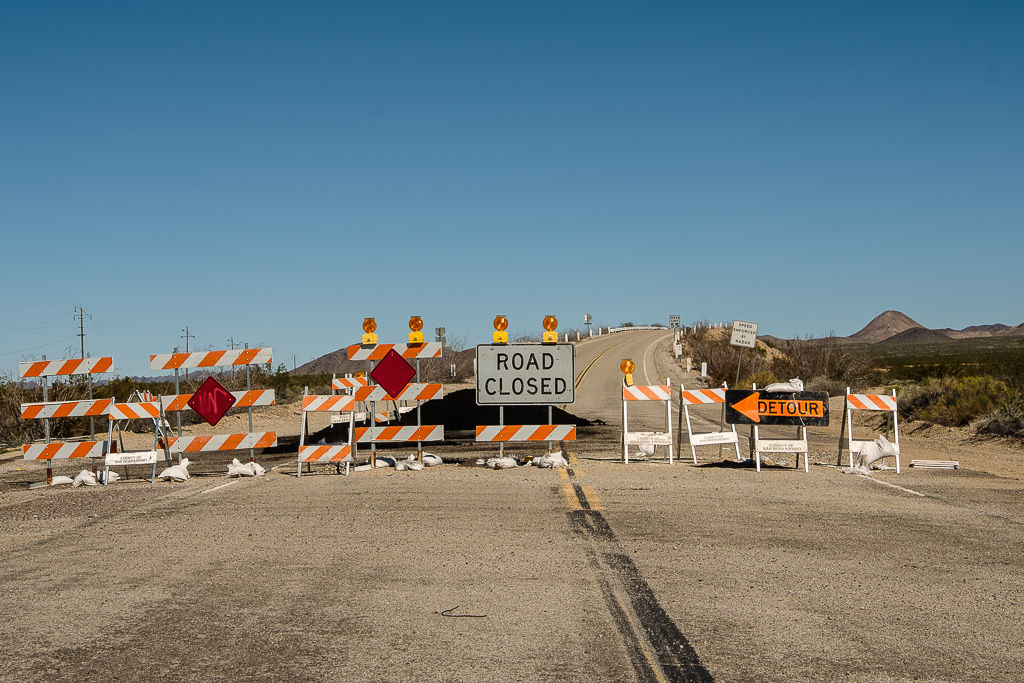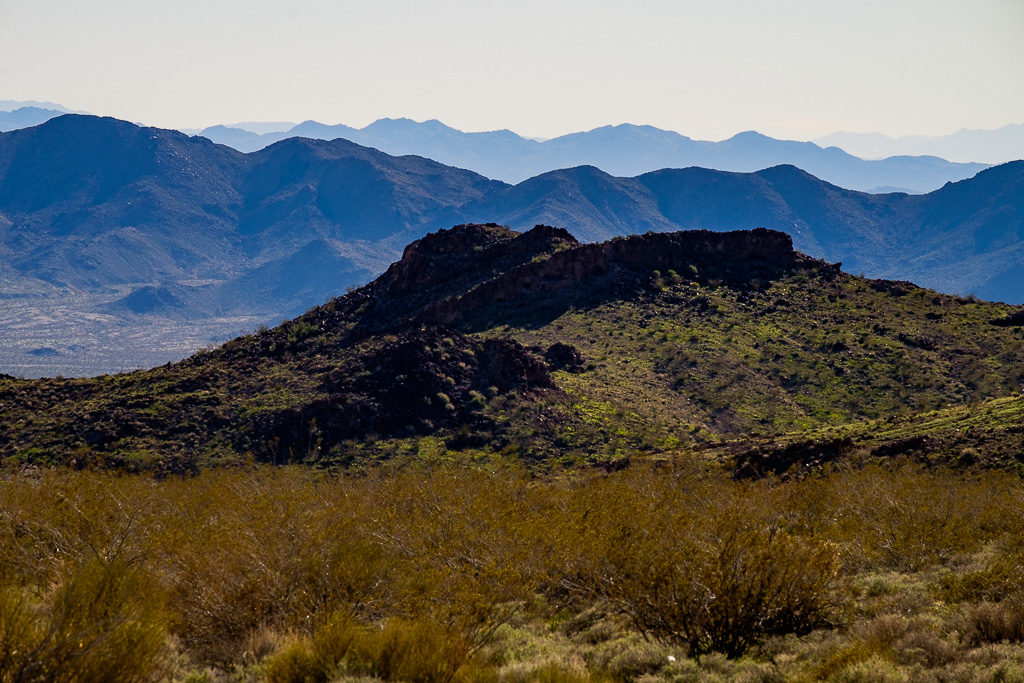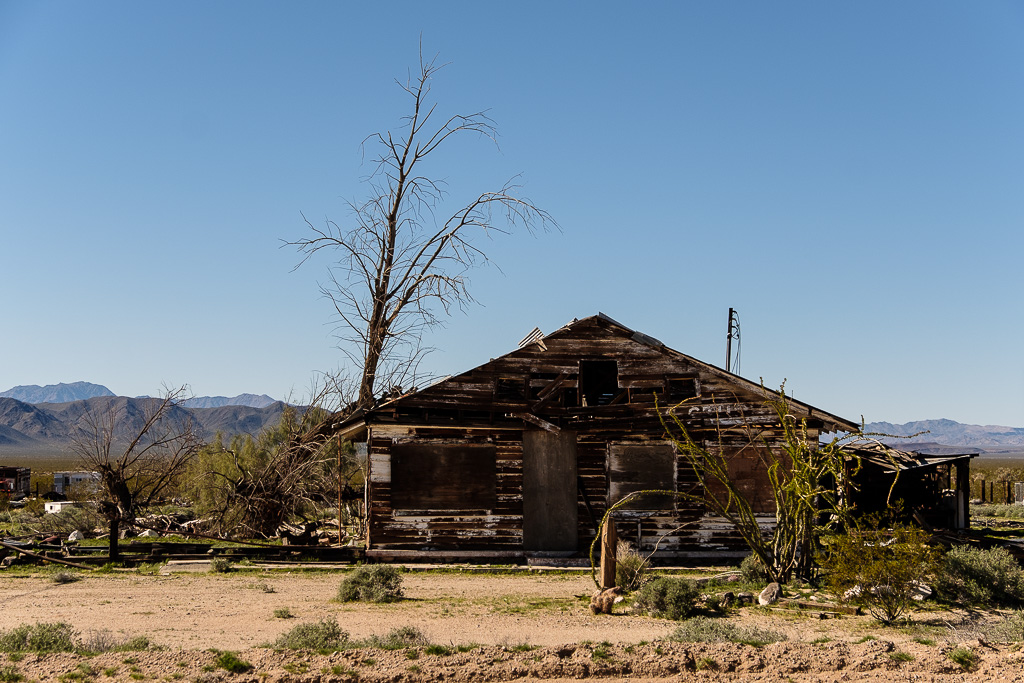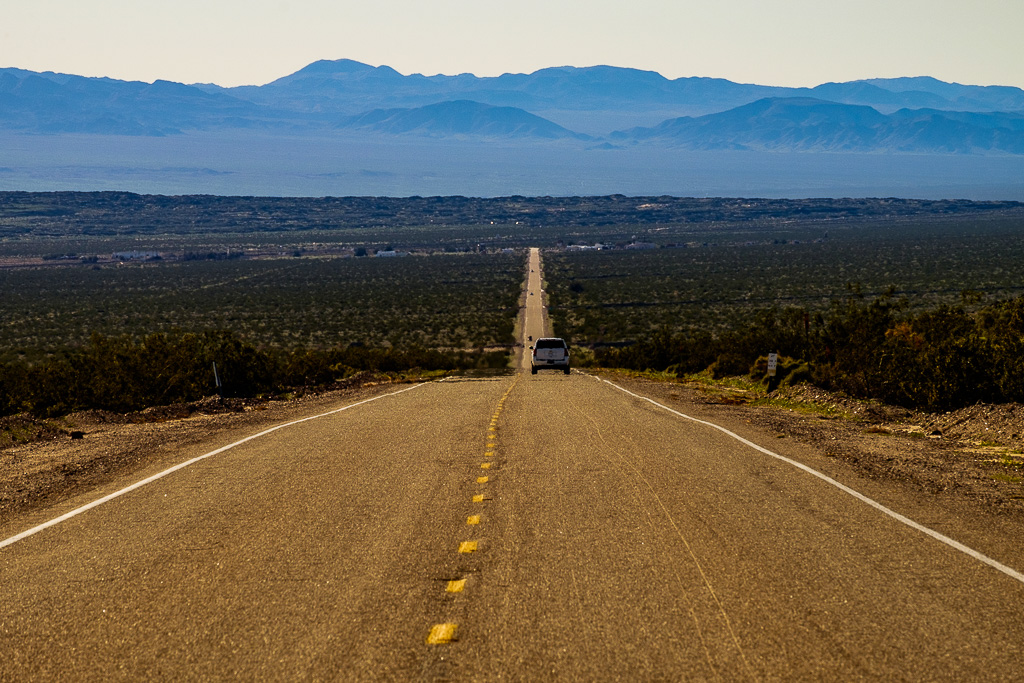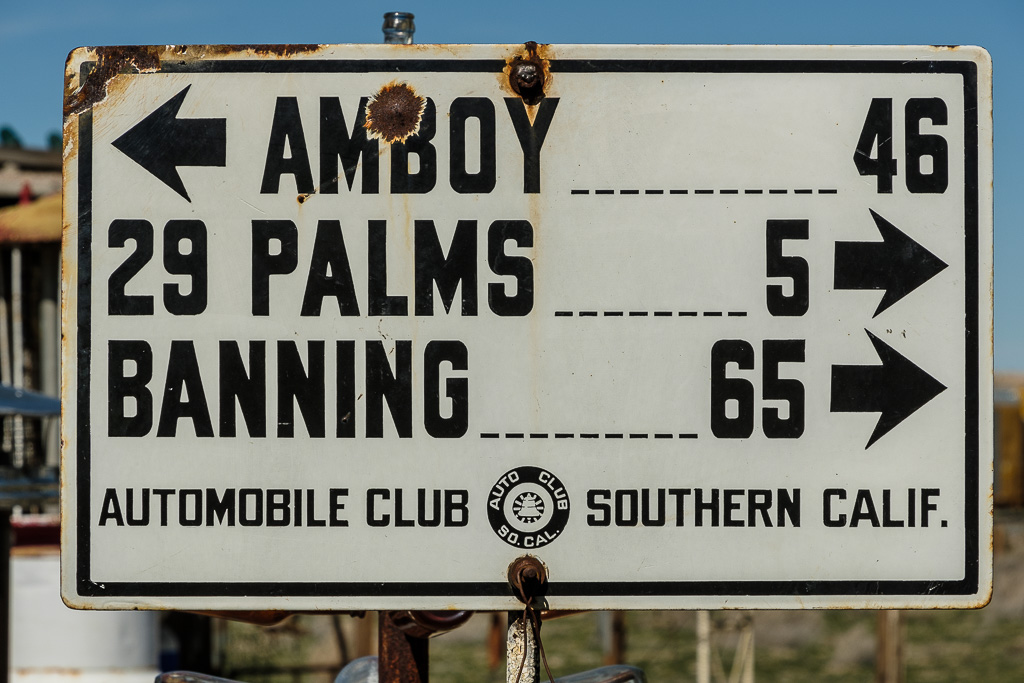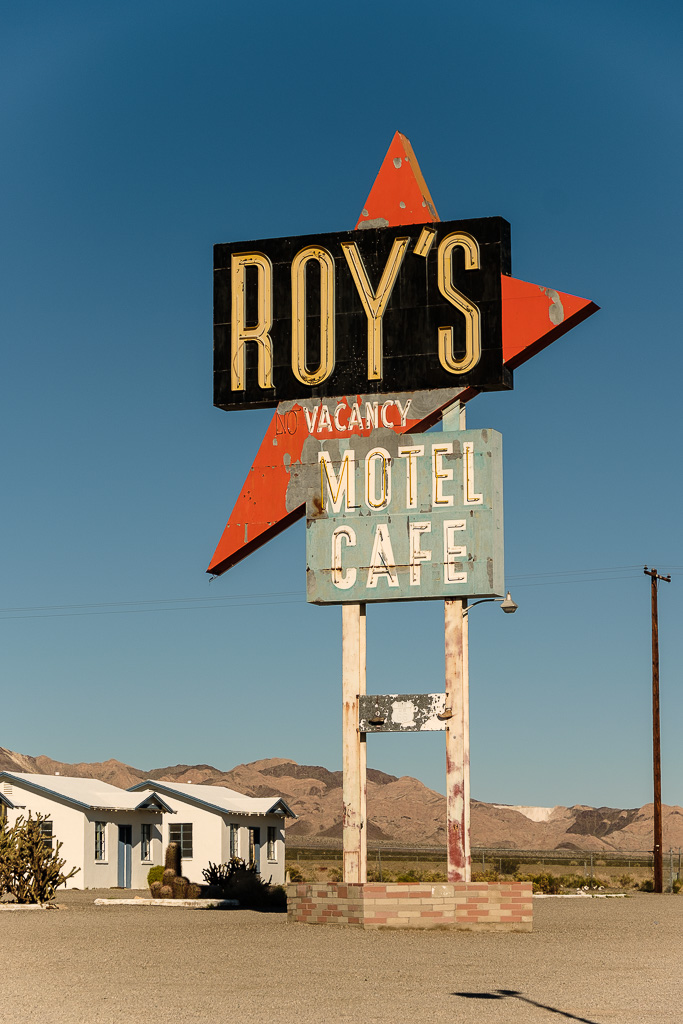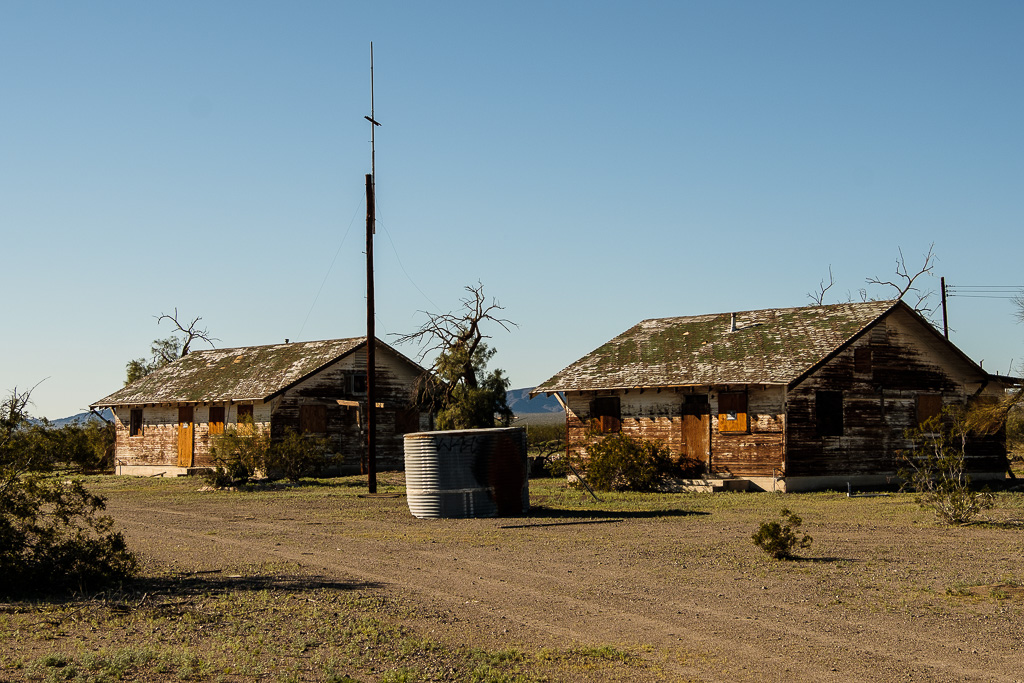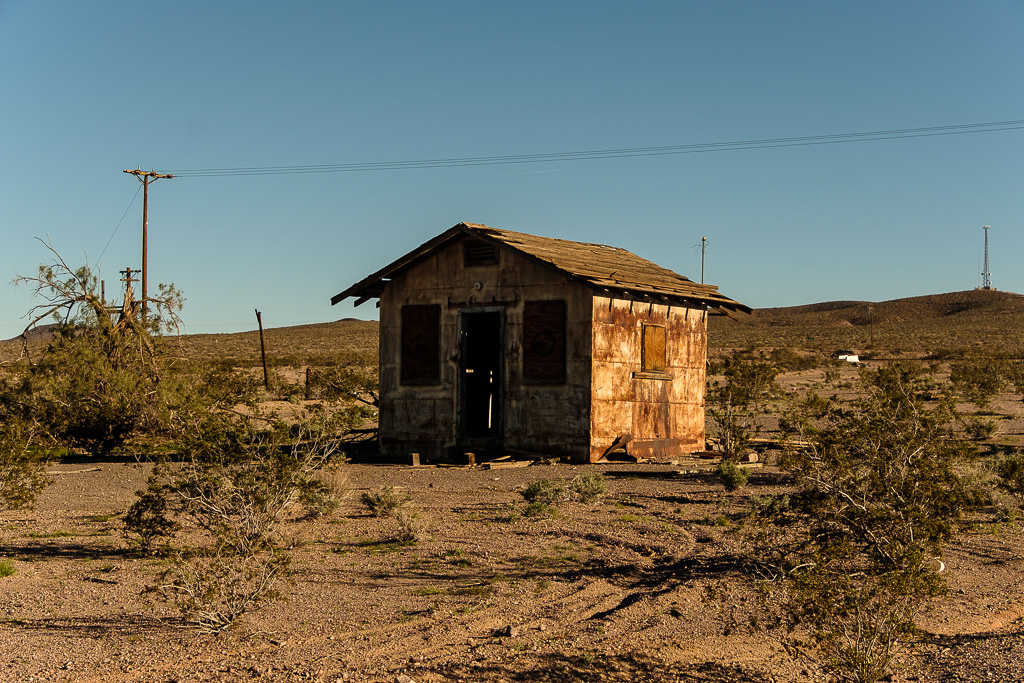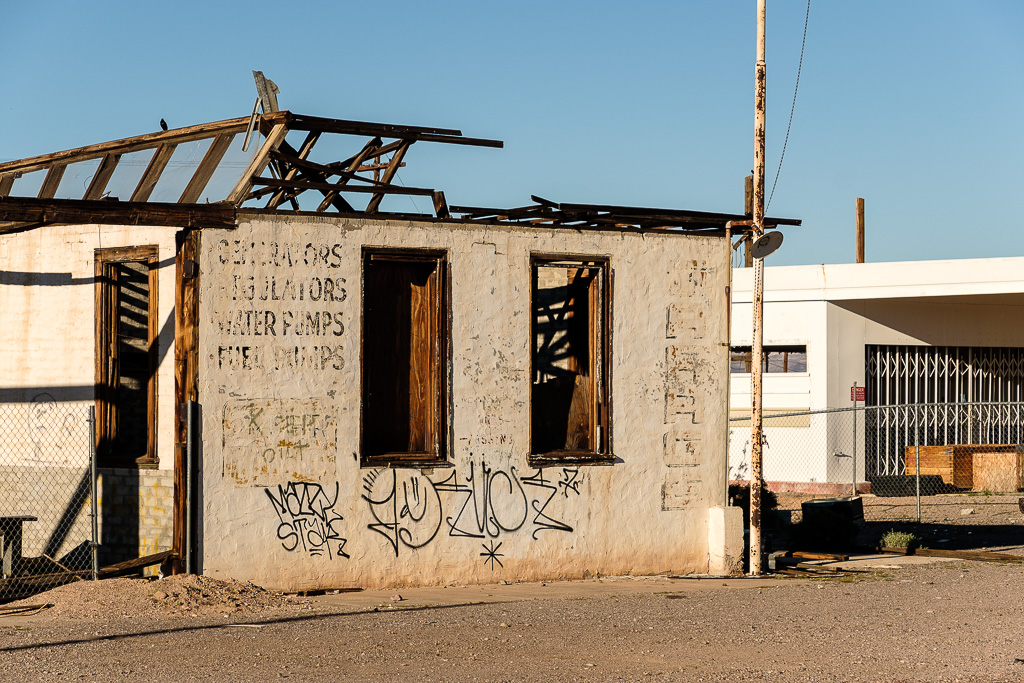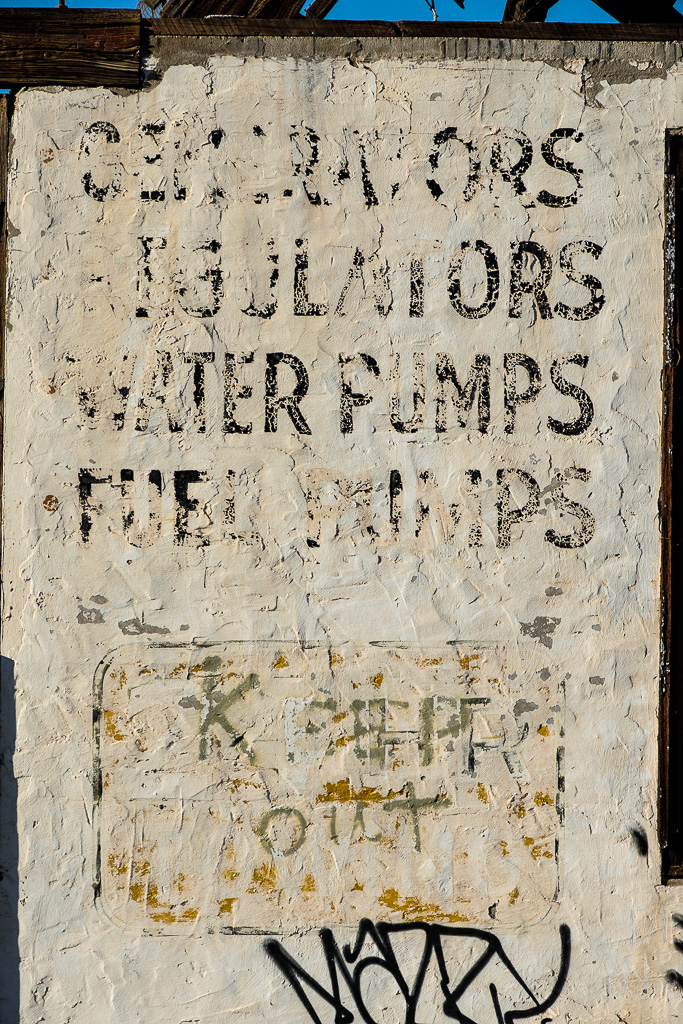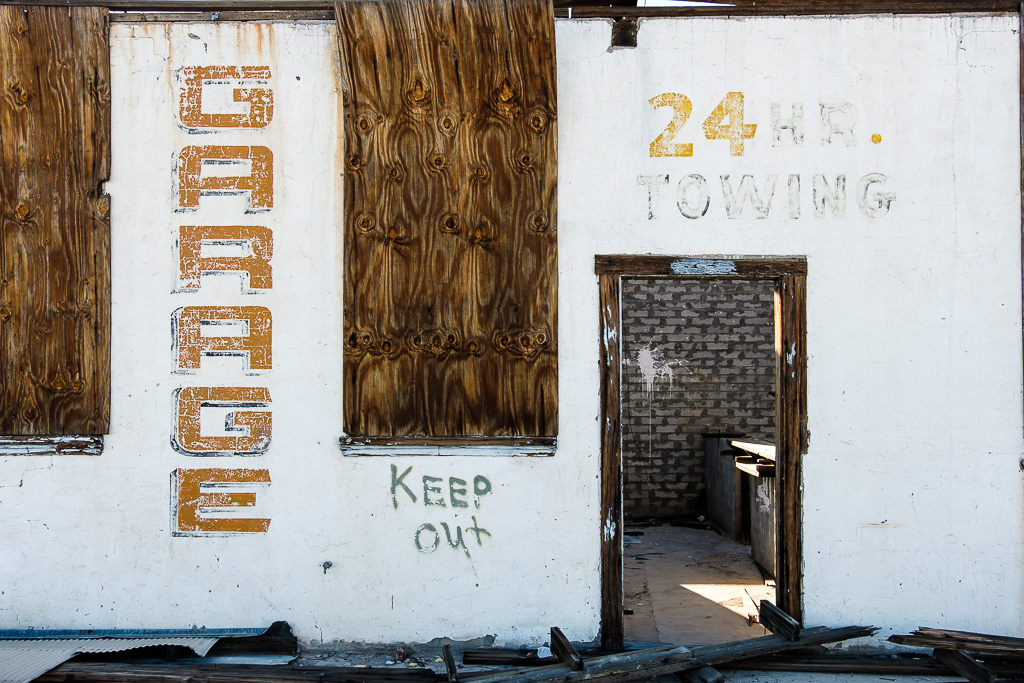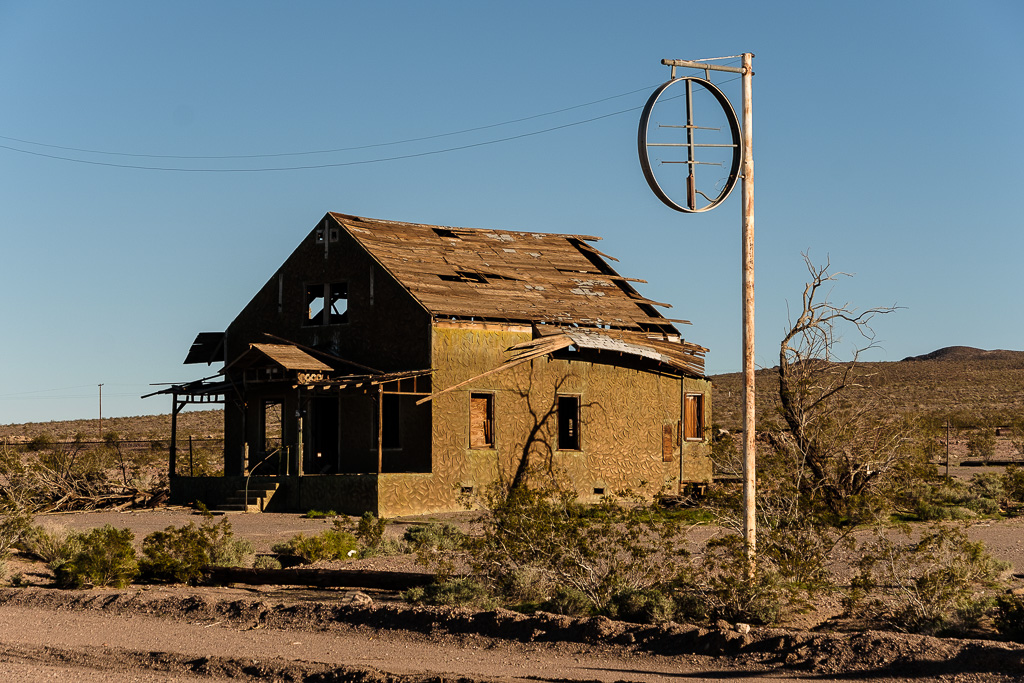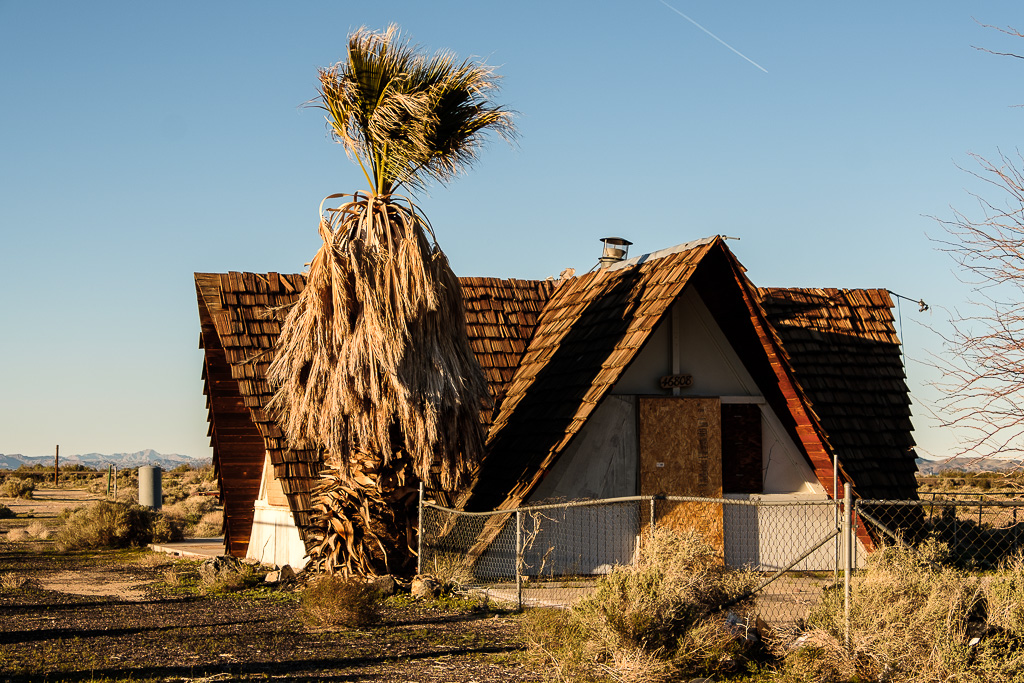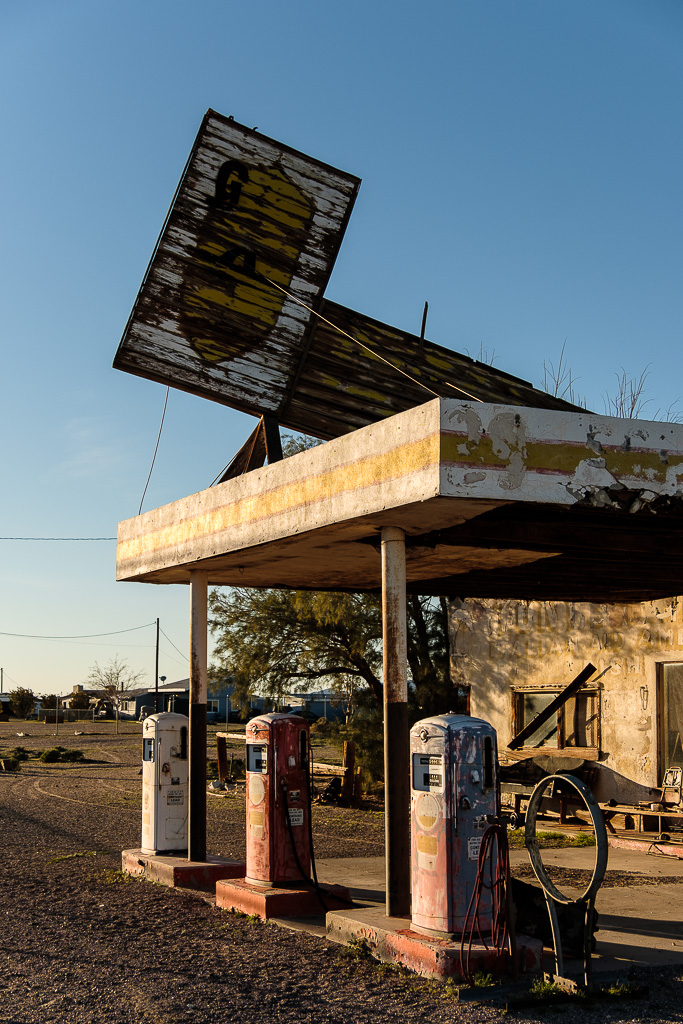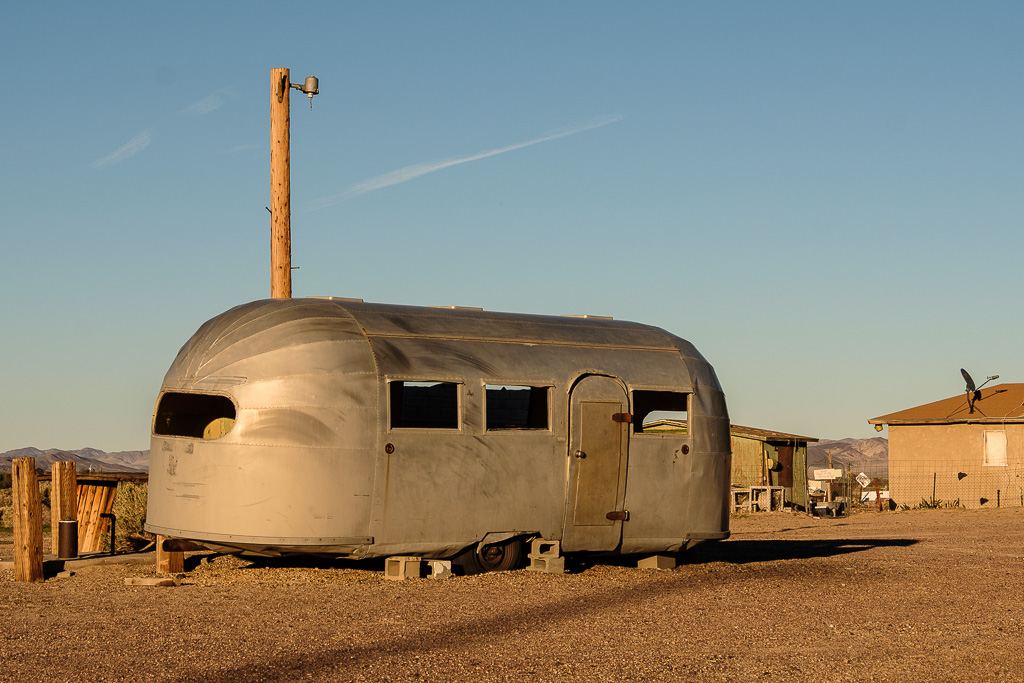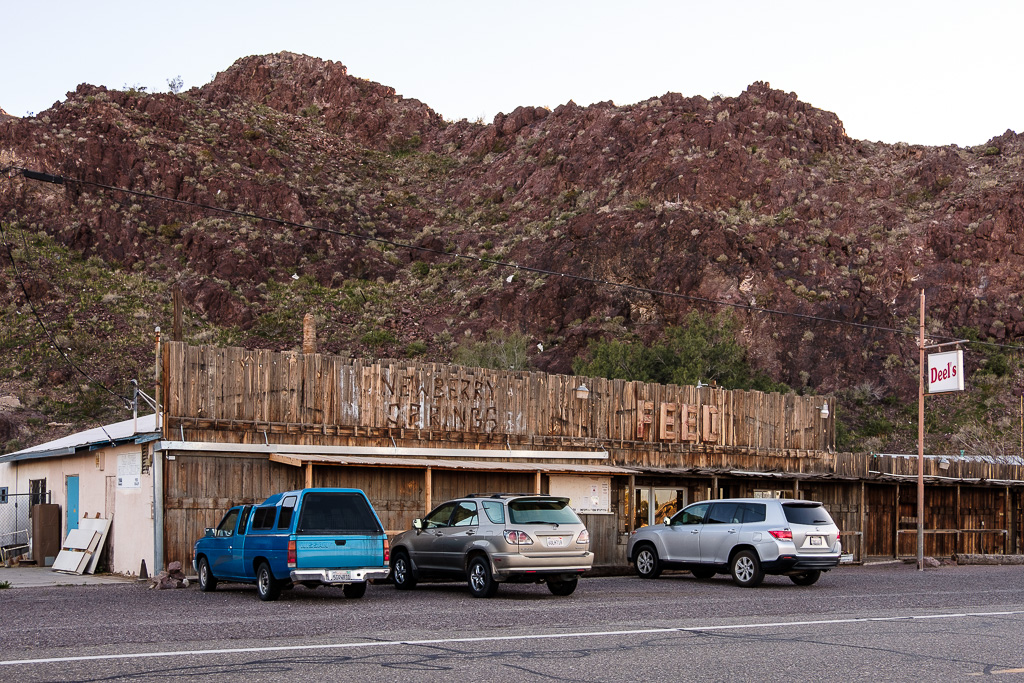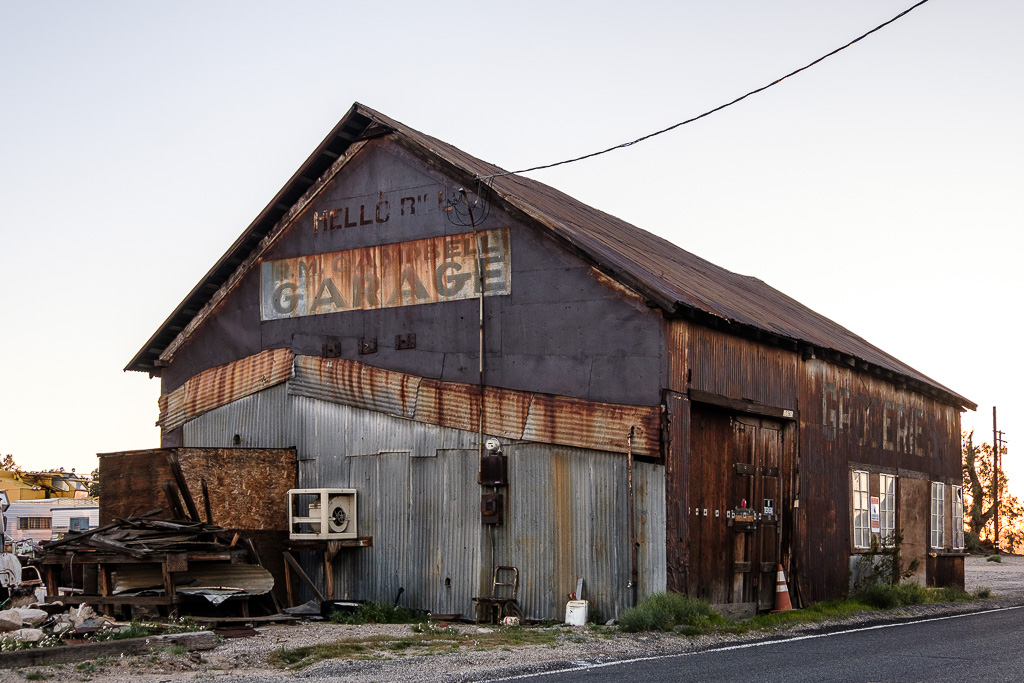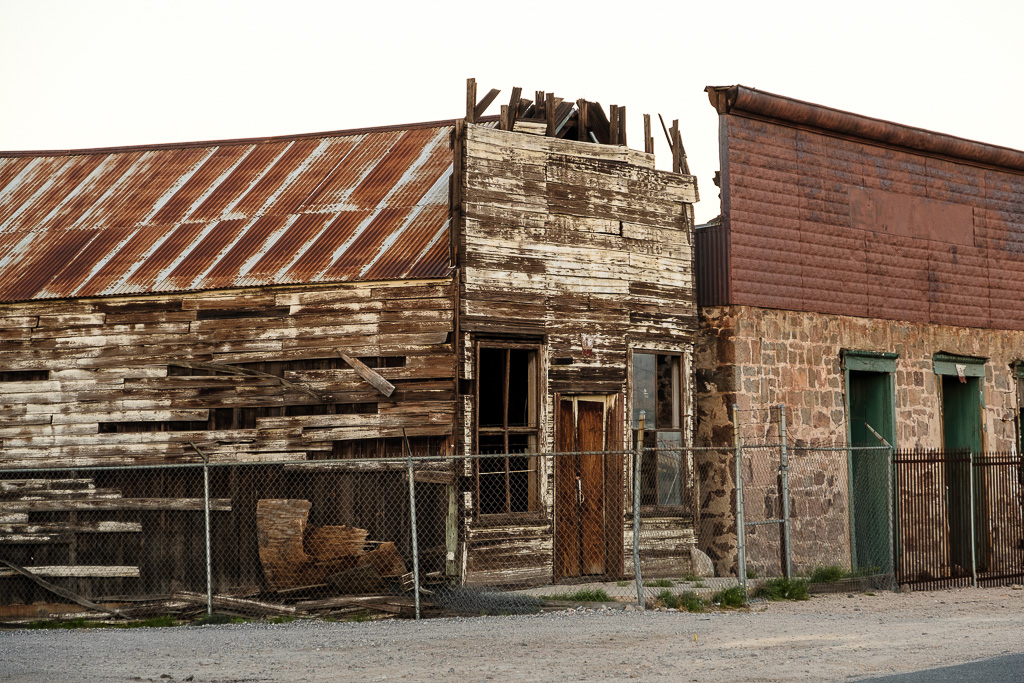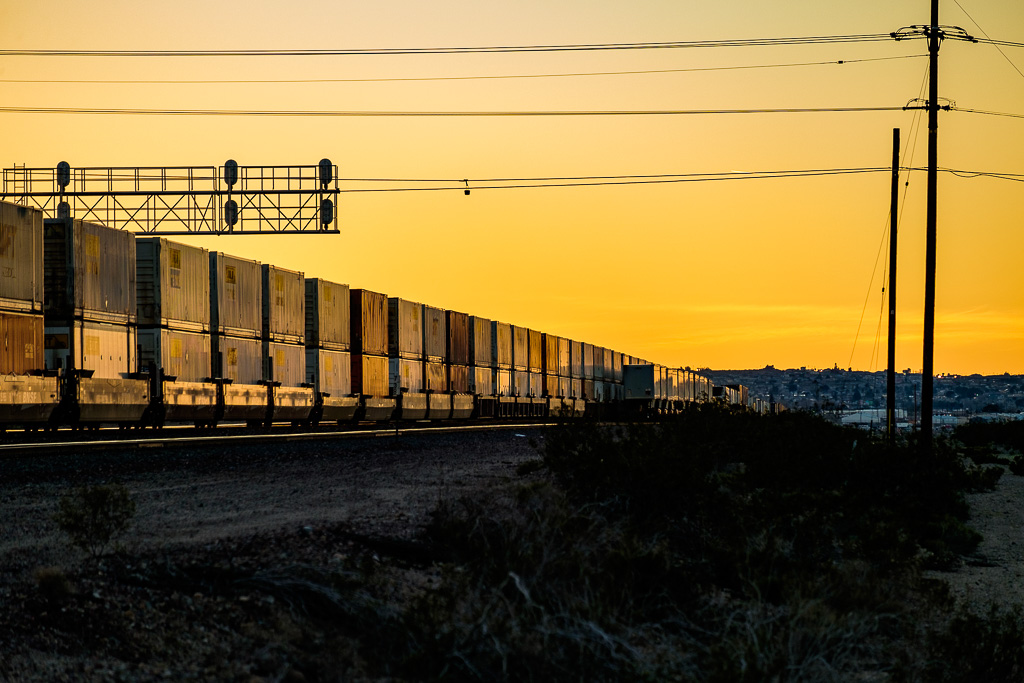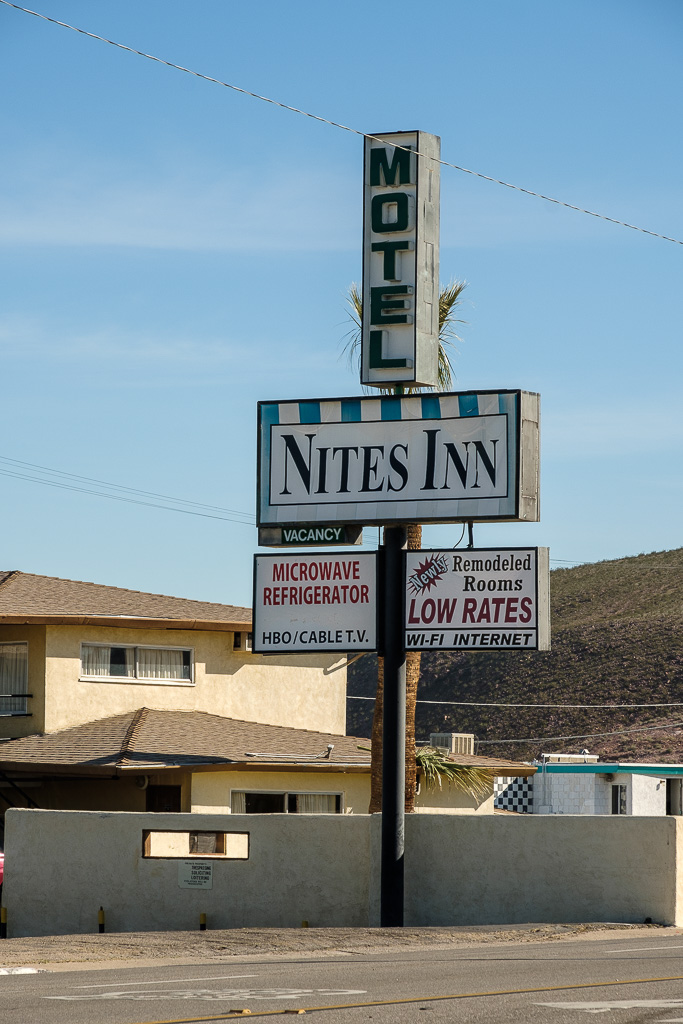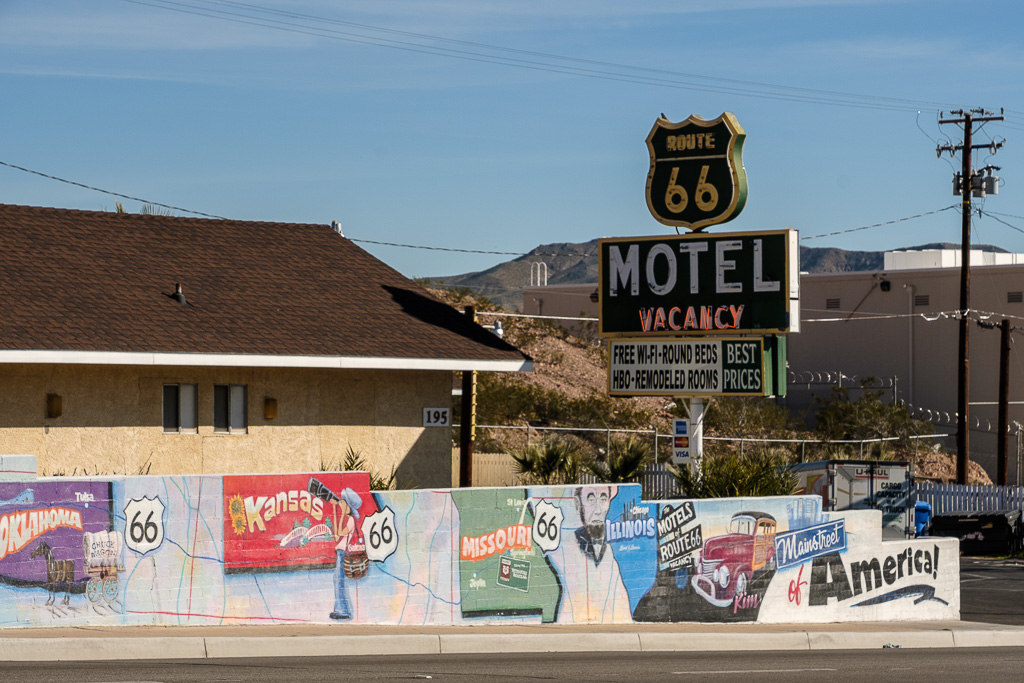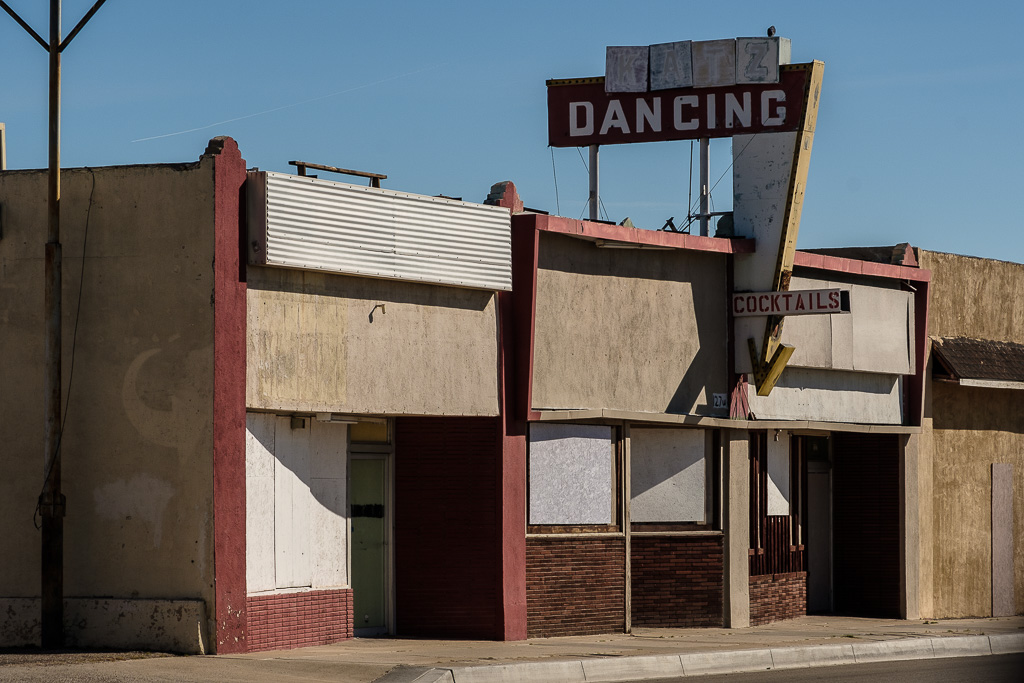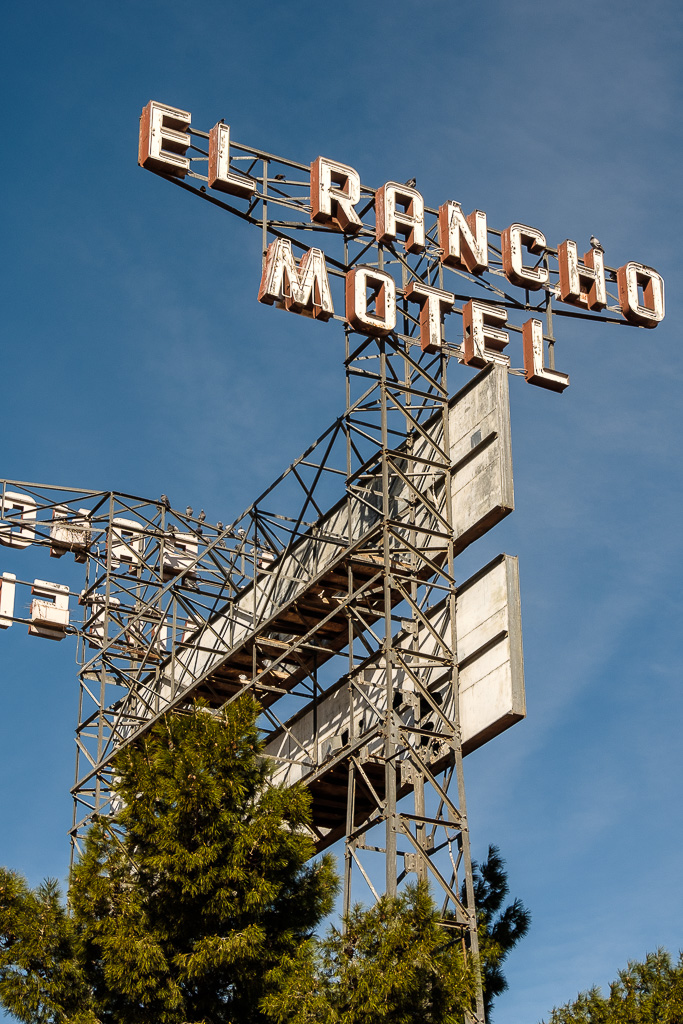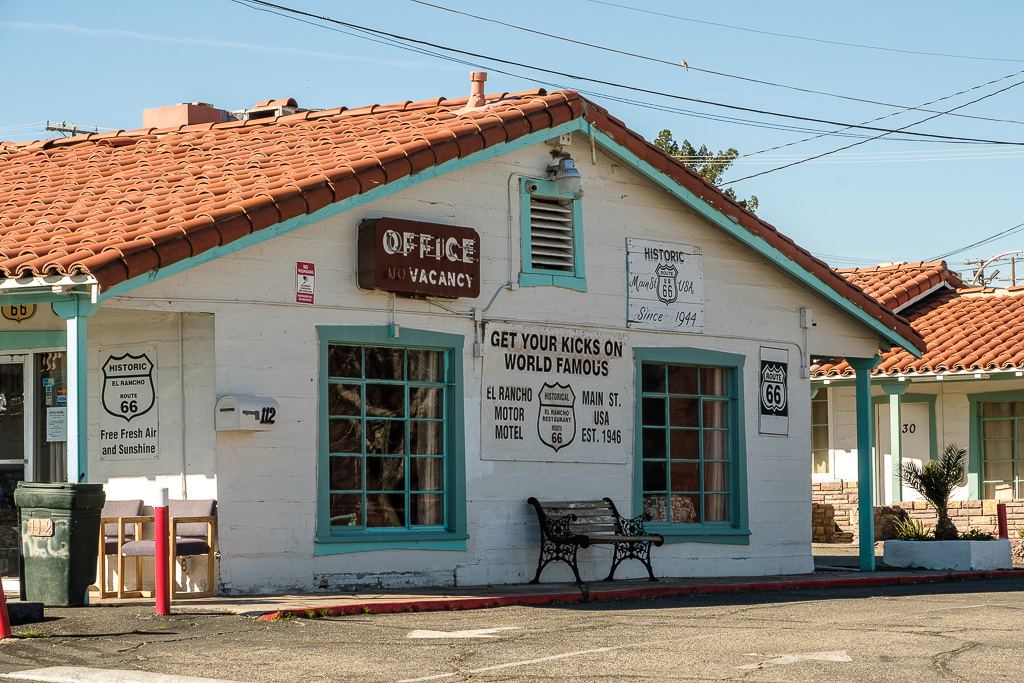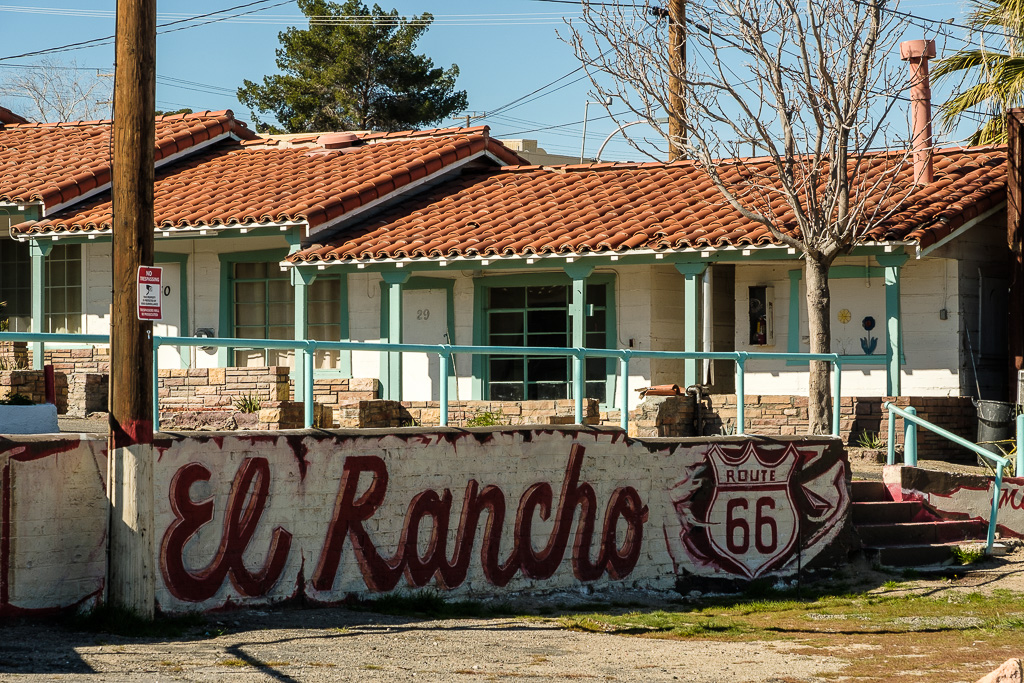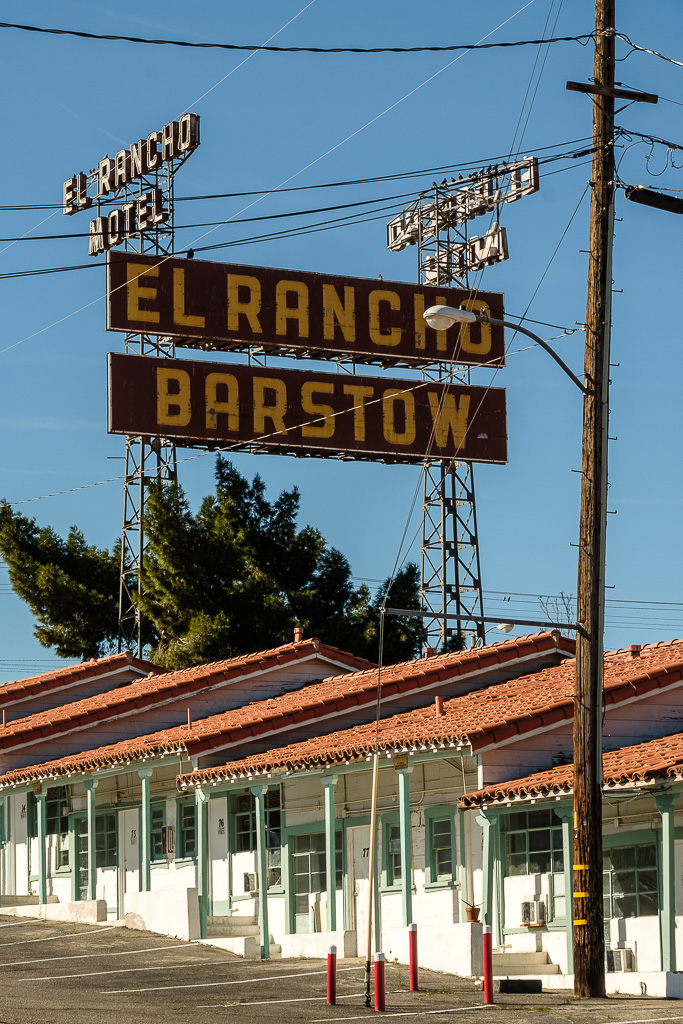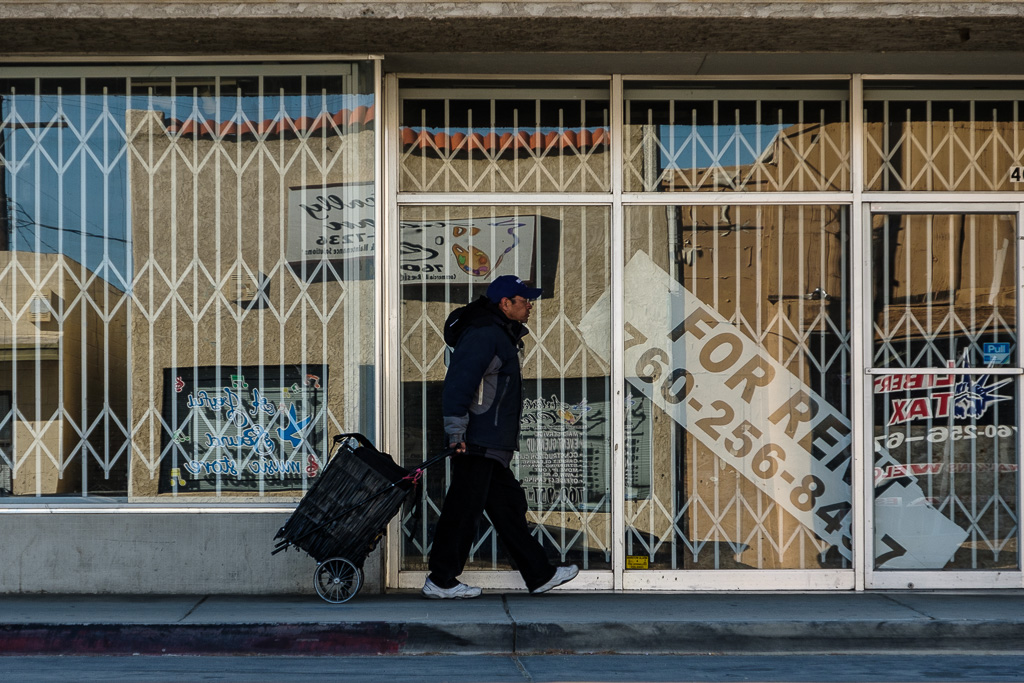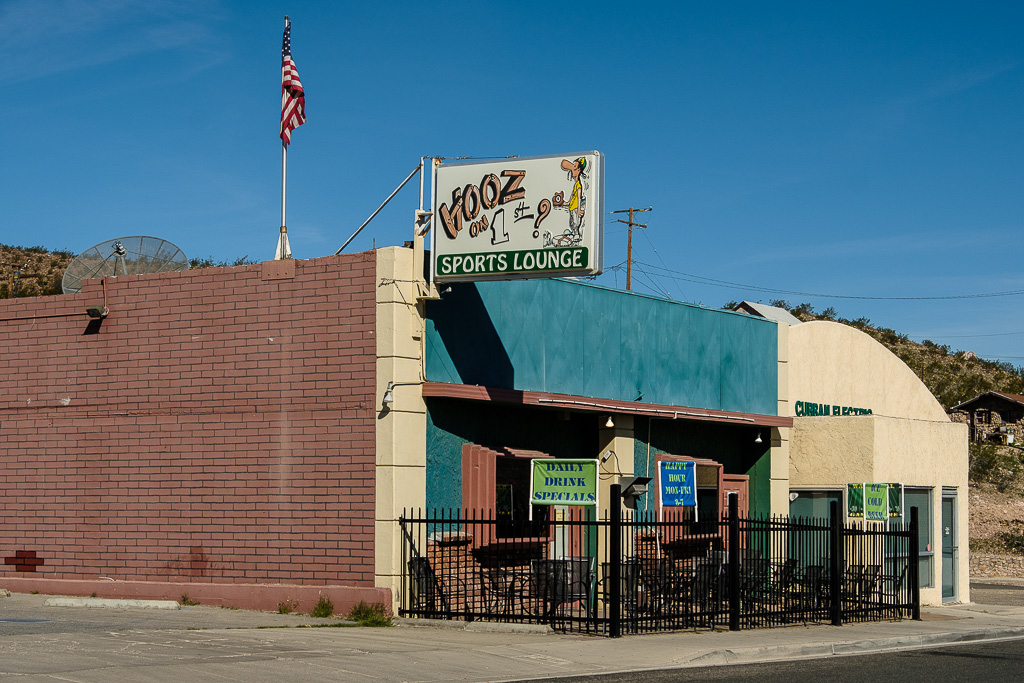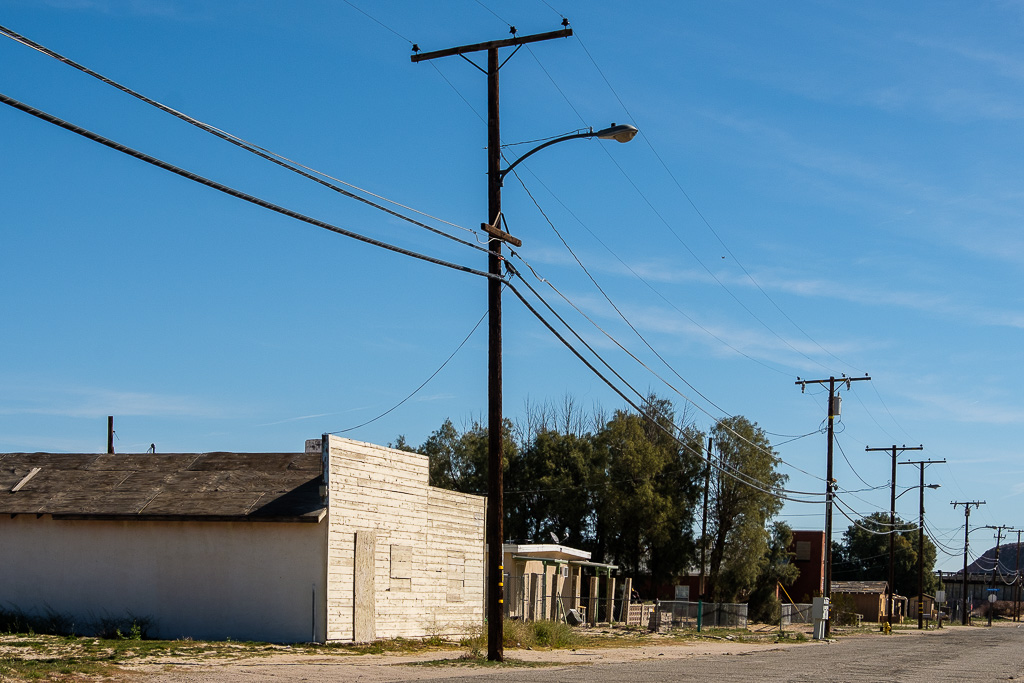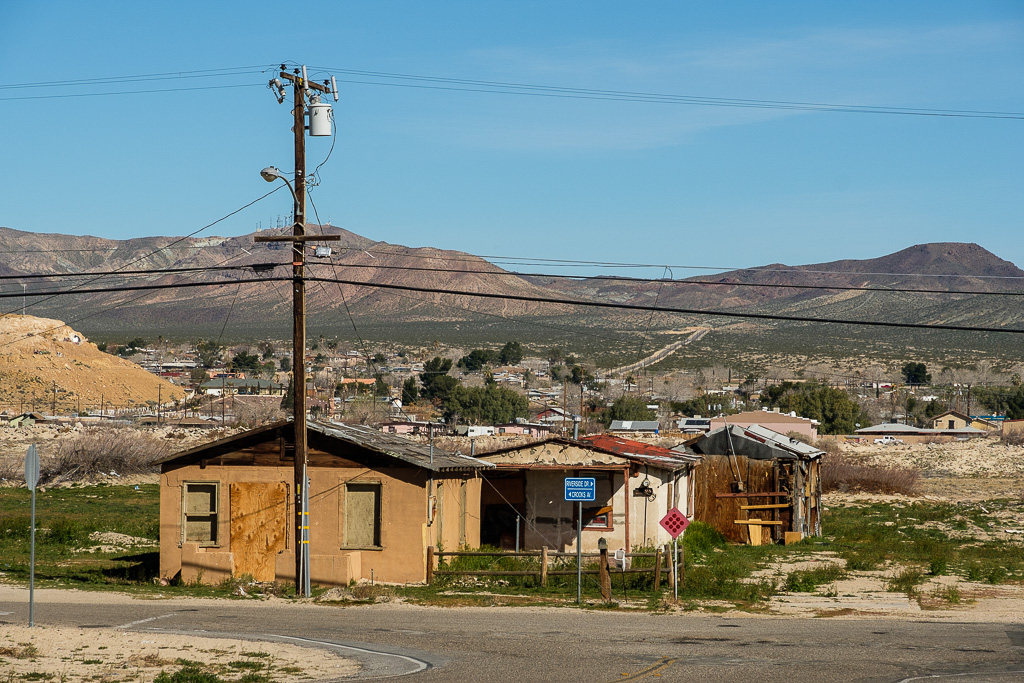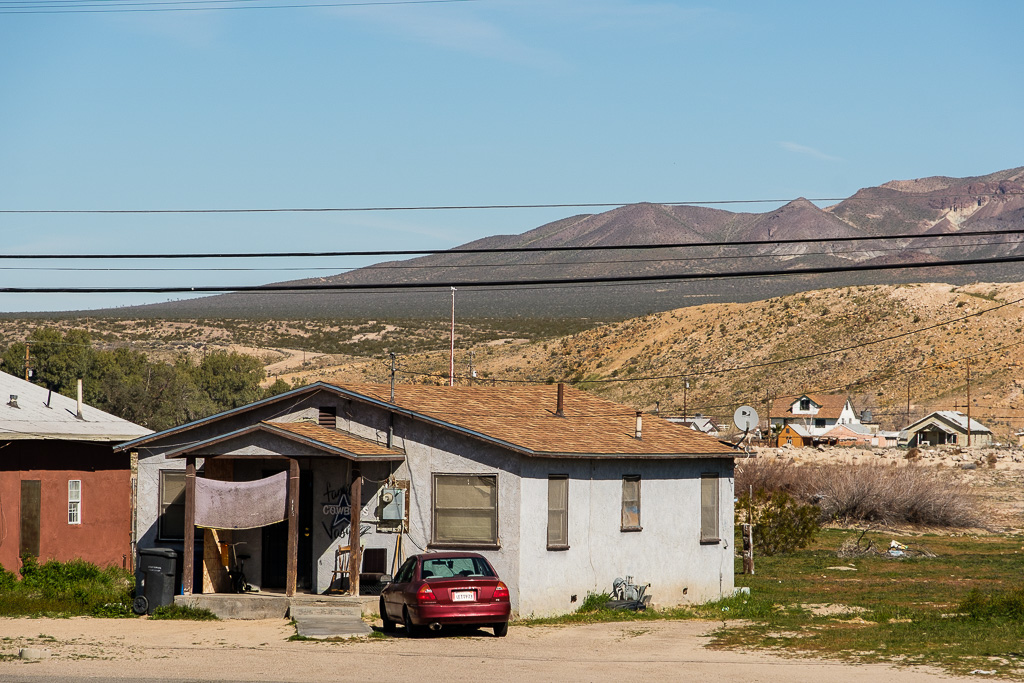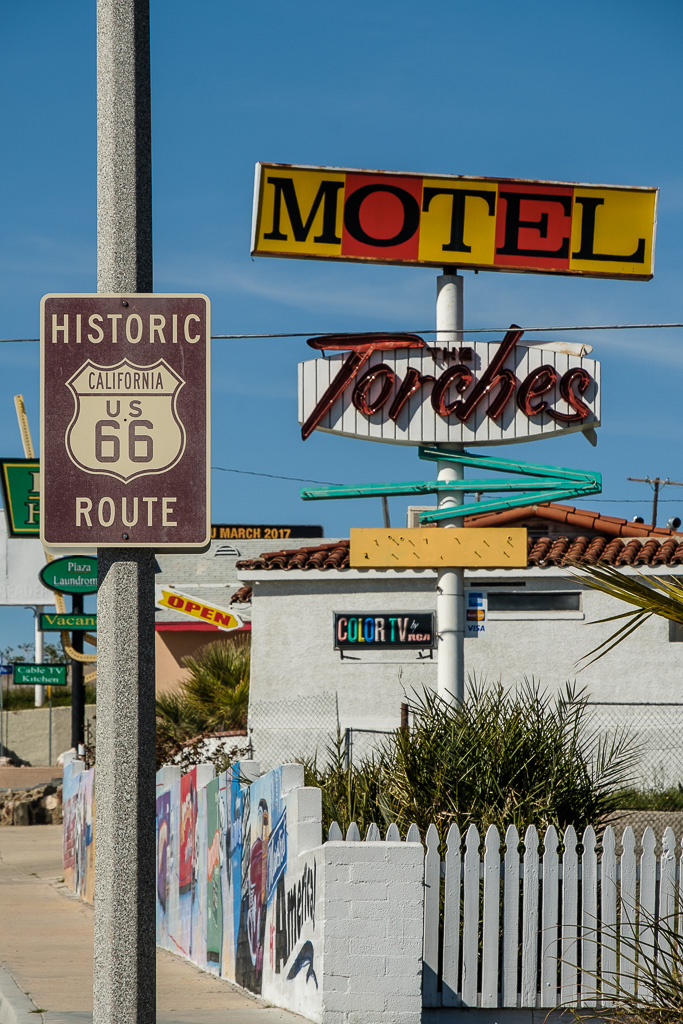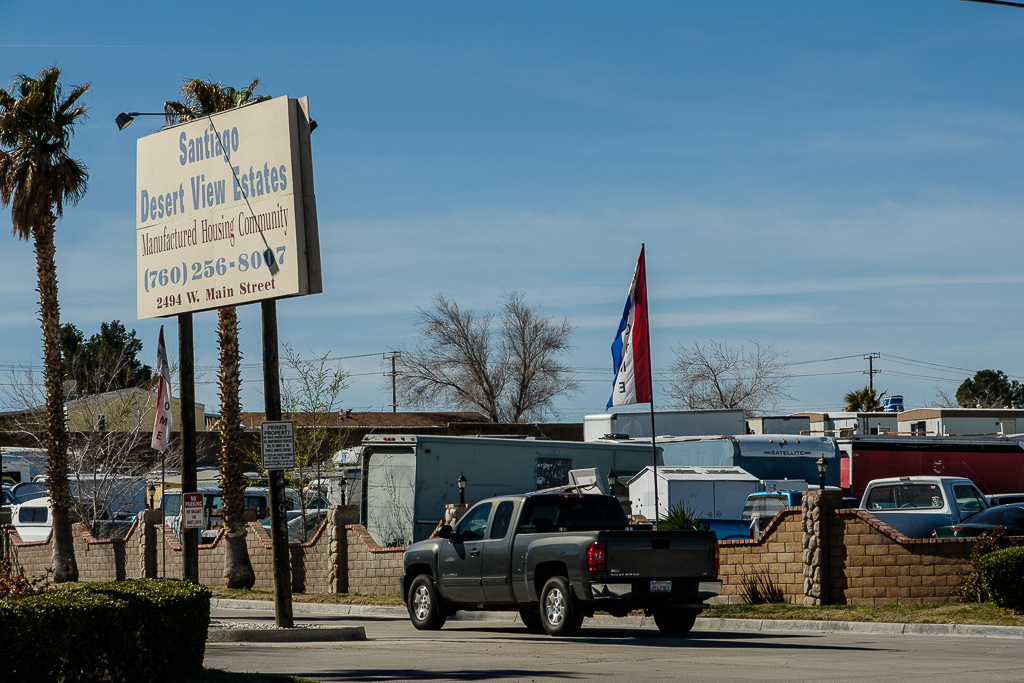 Crossing the Mojave on Route 66 in California. Needles to Barstow, March 2017.
Crossing the Mojave on Route 66 in California. Needles to Barstow, March 2017.
“Welcome to California, Joads! Look at the mountains you just crossed. Look at that big, scary desert you now have to cross.” (John Steinbeck, The Grapes of Wrath, Chapter 18.)
When I finally crossed over into the Golden State I felt a bit like the dust bowl migrants in the 30s – this was not yet the promised land. It is a desolate stretch of Route 66 from Needles to Barstow (this post) and from Barstow to Victorville (next post). It is a big desert. In Steinbeck’s novel, the Joad family also crossed over at Needles and headed for Barstow, as I did. The Joads would eventually get to the “vineyards, orchards, sparkling cities, and green fields” (Steinbeck’s words) but first the Mojave.
Forgive me if this post doesn’t have the usual exuberance. It’s going to be a more somber post than usually is the case. The first 200 miles of Route 66 in California are a huge expanse of mostly empty desert with one closed and decaying roadside business after another, and in many ways it was an unsatisfying drive. The few cities I saw seemed challenged. The drive did have its moments, however, so stick with me, please.
The first stop was Needles. It is said to be a city in steep decline; I am not going to dispute that characterization. There were a lot of closed businesses, boarded up storefronts, vacant lots – that sort of thing. Supposedly a lot of employers have moved across the state line to Arizona. I read that during summer months, Needles is often the hottest city in the United States. I saw a lot of abandoned homes, too. Also lots of closed motels. I didn’t do any photography there worth posting other than the first couple of shots. According to the Cinema Treasures website the theater in the second picture (and immediately to the left above) is the Needles Theatre (1929) which was originally a Masonic Temple and later converted into a movie theater. It has been closed since the 90s. I didn’t stay long in Needles and instead headed on – into the Mojave, destination Barstow for the night’s stop.
Route 66 follows the path of the “National Trails Highway” in the Mojave. As I understand it, mostly it is county maintained roadway (San Bernardino County). At one point (after little Essex) it was barricaded which meant turning around and taking about a 75 mile detour to cut up to I-40 and then cut back down to get on 66 again near Amboy.
It wasn’t all ghost towns and abandoned roadside relics on this stretch of Route 66. Iconic Roy’s in Amboy is being restored. A few other places were open here and there, including the Ludlow Cafe and the Bagdad Cafe in Newberry Springs. Yes, the Bagdad Cafe where the 1987 German movie was filmed. Rudi Cox’s (Jack Palance’s) Airstream trailer is still parked at the rear of the building.
I have been writing of emptiness and desolation, but in all fairness, both north and south of where I was in March one can visit some of the most spectacular and satisfying desert landscapes imaginable: Joshua Tree (to the south where the Mojave and Sonoran deserts meet) and Death Valley (to the north and also in the Mojave). I have photographed both, and when I do my galleys for this site, I will include sets of both.
I would post some pictures introducing you to some of the people I met but with one big exception I didn’t do my usual chats followed by photos. That’s because there were not so many people about. Almost none. One of the first things I saw outside of Needles was a deserted fruit stand. It was open but nobody there other than a Santa Claus mannequin out of uniform and with a trucker hat on. That was a good indicator that a very odd stretch of road was coming. I did help some lost French tourists in Amboy who were headed in the totally wrong direction (they were trying to get to Las Vegas).
Even bigger Needles and Barstow (this post) and Victorville (next post) were eerily quiet. It was not that hot either.
This set ends in Barstow. There is a big US Marine Corps base outside of Barstow. Some say the military and the railroad keep the place alive economically – more in the next post about the railroad and its importance historically to Barstow. If there is a nice part of downtown Barstow, I missed it. As in Needles, more boarded up houses and businesses.
Only two places on the whole Route 66 trip did I get turned down when I asked to take a picture of someone I spoke with (I always ask permission). Albuquerque and Barstow. In the latter case I was talking to a couple of guys by an old motel in front of a vape store (next to a liquor store with a suspended license). Maybe I didn’t belong there. Looking back I am pretty sure I didn’t. It’s pretty dodgy in downtown Barstow. Anyway, when I asked, one of them said something along the lines of “no man, I just got out of jail”. OK, I accept that.
Mostly the classic Route 66 places are gone in Barstow, replaced by the usual fast food places and other typical roadside businesses in Anywhere, USA. There were a few survivors with the finest being the classic El Rancho Motel. I did not stay there…nor did it appear that too many others were there either but it is still open. The sign is huge. Maybe the biggest I saw on Route 66 with the exception of perhaps one motel in Flagstaff AZ.
You will see some green in the desert in this post and the next. After all the winter rain in California it was remarkably green in the high desert.
We will continue with a bit more of Barstow in the next post and then get back on the desert road to Victorville.


